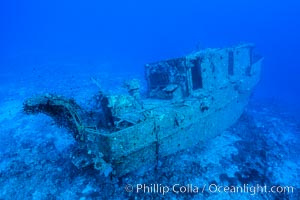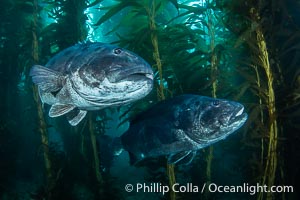
Two Giant Black Sea Bass in a Courtship Posture, in Kelp at Catalina Island. In summer months, black seabass gather in kelp forests in California to form mating aggregations. Courtship behaviors include circling of pairs of giant sea bass, production of booming sounds by presumed males, and nudging of females by males in what is though to be an effort to encourage spawning.
Species: Giant black sea bass, Stereolepis gigas
Location: Catalina Island, California
Image ID: 39432
Species: Giant black sea bass, Stereolepis gigas
Location: Catalina Island, California
Image ID: 39432
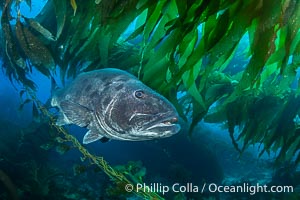
Giant Black Sea Bass with Distinctive Identifying Black Spots that allow researchers to carry out sight/resight studies on the animals distributions and growth. Black sea bass can reach 500 pounds and 8 feet in length.
Species: Giant black sea bass, Stereolepis gigas
Location: Catalina Island, California
Image ID: 39433
Species: Giant black sea bass, Stereolepis gigas
Location: Catalina Island, California
Image ID: 39433
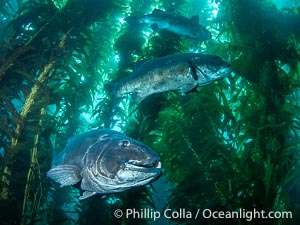
Three Giant Black Sea Bass in a Courtship Posture, Hovering One Above the Other in Kelp at Catalina Island. In summer months, black seabass gather in kelp forests in California to form mating aggregations. Courtship behaviors include circling of pairs of giant sea bass, production of booming sounds by presumed males, and nudging of females by males in what is though to be an effort to encourage spawning.
Species: Giant black sea bass, Stereolepis gigas
Location: Catalina Island, California
Image ID: 39434
Species: Giant black sea bass, Stereolepis gigas
Location: Catalina Island, California
Image ID: 39434
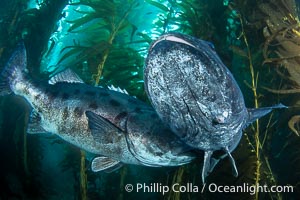
A male giant sea bass nudges a female giant sea bass to encourage spawning as they swim in a tight circle. This courting pair of giant sea bass is deep in the kelp forest at Catalina Island. In summer months, giant sea bass gather in kelp forests in California to form courtship and mating aggregations, eventually leading to spawning.
Species: Giant black sea bass, Stereolepis gigas
Location: Catalina Island, California
Image ID: 39435
Species: Giant black sea bass, Stereolepis gigas
Location: Catalina Island, California
Image ID: 39435
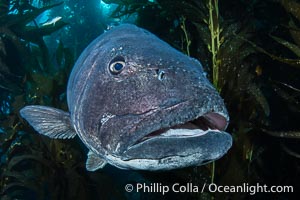
Closeup Portrait of the Face of a Giant Black Sea Bass, showing parasitic sea lice. The sea lice are parasites that find their nutrition from the skin and blood of the host giant sea bass. Smaller fishes such as senoritas and wrasses will commonly clean the sea lice off the giant sea bass.
Species: Giant black sea bass, Stereolepis gigas
Location: Catalina Island, California
Image ID: 39436
Species: Giant black sea bass, Stereolepis gigas
Location: Catalina Island, California
Image ID: 39436
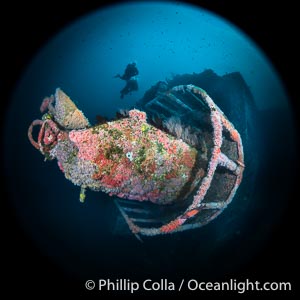
Divers Swim Over the Wreck of the HMCS Yukon in San Diego. Deliberately sunk in 2000 at San Diego's Wreck Alley to form an artifical reef, the HMCS Yukon is a 366-foot-long former Canadian destroyer. It is encrusted with a variety of invertebrate life, including Cornyactis anemones which provide much of the color seen here.
Location: San Diego, California
Image ID: 39474
Location: San Diego, California
Image ID: 39474
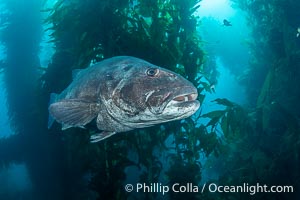
Giant Black Sea Bass with Distinctive Identifying Black Spots that allow researchers to carry out sight/resight studies on the animals distributions and growth. Black sea bass can reach 500 pounds and 8 feet in length.
Species: Giant black sea bass, Stereolepis gigas
Location: Catalina Island, California
Image ID: 39437
Species: Giant black sea bass, Stereolepis gigas
Location: Catalina Island, California
Image ID: 39437
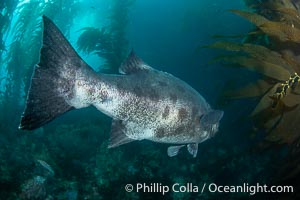
Broad Tail of a Black Sea Bass in the California Kelp Forest showing distinctive unique black spots that allow researchers to identify individual giant sea bass.
Species: Giant black sea bass, Stereolepis gigas
Location: Catalina Island, California
Image ID: 39438
Species: Giant black sea bass, Stereolepis gigas
Location: Catalina Island, California
Image ID: 39438
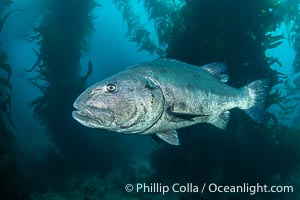
Giant black sea bass in the kelp forest at Catalina Island. An Endangered Giant Sea Bass can reach up to 8 feet in length and 500 pounds, seen here amid the giant kelp forest of Catalina Island. Once nearly fished to extinction and now thought to be at risk of a genetic bottleneck, the giant sea bass is slowly recovering and can be seen in summer months in California's kelp forests.
Species: Giant black sea bass, Stereolepis gigas
Location: Catalina Island, California
Image ID: 39439
Species: Giant black sea bass, Stereolepis gigas
Location: Catalina Island, California
Image ID: 39439
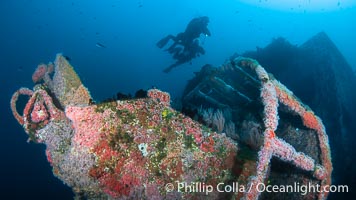
Divers Swim Over the Wreck of the HMCS Yukon in San Diego. Deliberately sunk in 2000 at San Diego's Wreck Alley to form an artifical reef, the HMCS Yukon is a 366-foot-long former Canadian destroyer. It is encrusted with a variety of invertebrate life, including Cornyactis anemones which provide much of the color seen here.
Location: San Diego, California
Image ID: 39475
Location: San Diego, California
Image ID: 39475
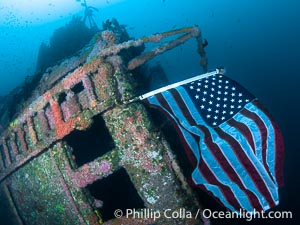
American Flag Flying Over The Wreck of the HMCS Yukon in San Diego. Deliberately sunk in 2000 as part of San Diego's Wreck Alley to form an artifical reef, the HMCS Yukon is a 366-foot-long former Canadian destroyer. It is encrusted with a variety of invertebrate life, including Cornyactis anemones which provide much of the color seen here.
Location: San Diego, California
Image ID: 39476
Location: San Diego, California
Image ID: 39476
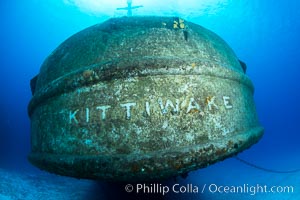
USS Kittiwake wreck, sunk off Seven Mile Beach on Grand Cayman Island to form an underwater marine park and dive attraction.
Location: Grand Cayman, Cayman Islands
Image ID: 32141
Location: Grand Cayman, Cayman Islands
Image ID: 32141
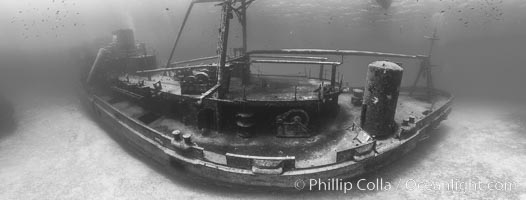
USS Kittiwake wreck, sunk off Seven Mile Beach on Grand Cayman Island to form an underwater marine park and dive attraction.
Image ID: 32143
Panorama dimensions: 4890 x 12865
Image ID: 32143
Panorama dimensions: 4890 x 12865
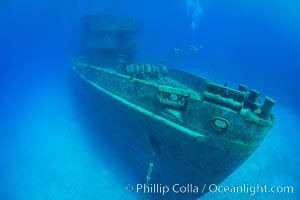
USS Kittiwake wreck, sunk off Seven Mile Beach on Grand Cayman Island to form an underwater marine park and dive attraction.
Location: Grand Cayman, Cayman Islands
Image ID: 32145
Location: Grand Cayman, Cayman Islands
Image ID: 32145
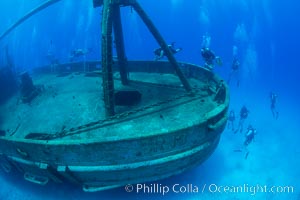
SCUBA divers on the wreck of the USS Kittiwake, sunk off Seven Mile Beach on Grand Cayman Island to form an underwater marine park and dive attraction.
Location: Grand Cayman, Cayman Islands
Image ID: 32146
Location: Grand Cayman, Cayman Islands
Image ID: 32146
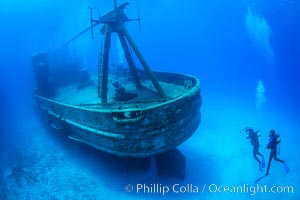
SCUBA divers on the wreck of the USS Kittiwake, sunk off Seven Mile Beach on Grand Cayman Island to form an underwater marine park and dive attraction.
Location: Grand Cayman, Cayman Islands
Image ID: 32148
Location: Grand Cayman, Cayman Islands
Image ID: 32148
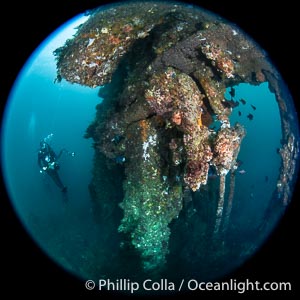
Wreck of the Portland Maru, some structure still visible, Kangaroo Island, South Australia. The Portland Maru was a 117-meter Japanese cargo ship which struck a submerged object and was beached near Cape Borda, Kangaroo Island, on March 19, 1935.
Location: Wreck of the Portland Maru, Kangaroo Island, South Australia
Image ID: 39215
Location: Wreck of the Portland Maru, Kangaroo Island, South Australia
Image ID: 39215
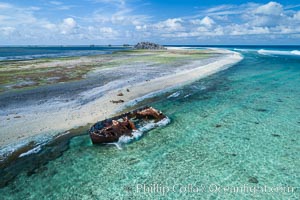
Rusting shipwreck on the beach at Clipperton Island, aerial photo, Clipperton Island is a spectacular coral atoll in the eastern Pacific. By permit HC / 1485 / CAB (France).
Location: Clipperton Island, France
Image ID: 32838
Location: Clipperton Island, France
Image ID: 32838
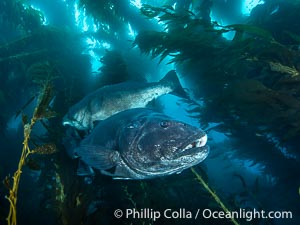
Two Giant Black Sea Bass in a Courtship Posture, in Kelp at Catalina Island. In summer months, black seabass gather in kelp forests in California and form courtship and mating aggregations.
Species: Giant black sea bass, Stereolepis gigas
Location: Catalina Island, California
Image ID: 39440
Species: Giant black sea bass, Stereolepis gigas
Location: Catalina Island, California
Image ID: 39440
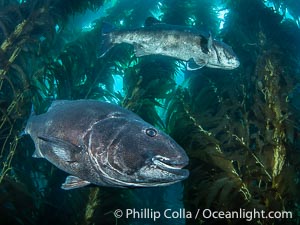
Two Giant Black Sea Bass in a Courtship Posture, in Kelp at Catalina Island. In summer months, black seabass gather in kelp forests in California and form courtship and mating aggregations.
Species: Giant black sea bass, Stereolepis gigas
Location: Catalina Island, California
Image ID: 39441
Species: Giant black sea bass, Stereolepis gigas
Location: Catalina Island, California
Image ID: 39441
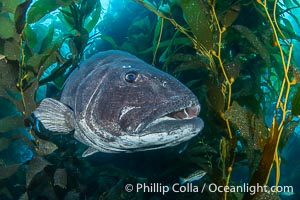
A giant black sea bass is an endangered species that can reach up to 8 feet in length and 500 pounds, often found amid the giant kelp forest, Once nearly fished to extinction and now thought to be at risk of a genetic bottleneck, the giant sea bass is slowly recovering and can be seen in summer months in California's kelp forests.
Species: Giant black sea bass, Stereolepis gigas
Location: Catalina Island, California
Image ID: 39442
Species: Giant black sea bass, Stereolepis gigas
Location: Catalina Island, California
Image ID: 39442
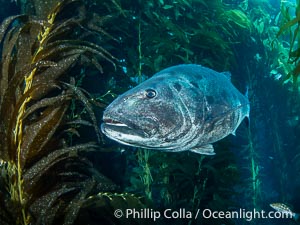
Giant Black Sea Bass with Distinctive Identifying Black Spots that allow researchers to carry out sight/resight studies on the animals distributions and growth. Black sea bass can reach 500 pounds and 8 feet in length.
Species: Giant black sea bass, Stereolepis gigas
Location: Catalina Island, California
Image ID: 39443
Species: Giant black sea bass, Stereolepis gigas
Location: Catalina Island, California
Image ID: 39443
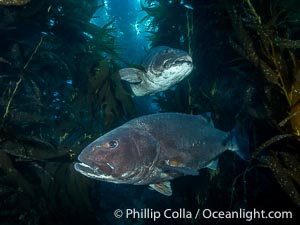
Two Giant Black Sea Bass in a Courtship Posture, in Kelp at Catalina Island. In summer months, black seabass gather in kelp forests in California and form courtship and mating aggregations.
Species: Giant black sea bass, Stereolepis gigas
Location: Catalina Island, California
Image ID: 39444
Species: Giant black sea bass, Stereolepis gigas
Location: Catalina Island, California
Image ID: 39444
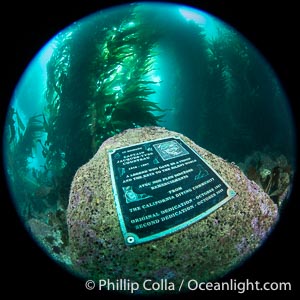
Underwater Plaque Honoring Jacques Cousteau at the Casino Point Dive Park, Avalon, Catalina Island.
Location: Catalina Island, California
Image ID: 39445
Location: Catalina Island, California
Image ID: 39445
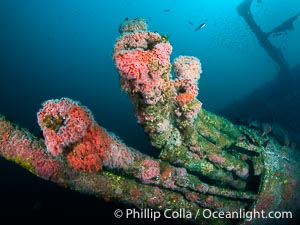
The Wreck of the HMCS Yukon in San Diego. Deliberately sunk in 2000 as part of San Diego's Wreck Alley to form an artifical reef, the HMCS Yukon is a 366-foot-long former Canadian destroyer. It is encrusted with a variety of invertebrate life, including Cornyactis anemones which provide much of the color seen here.
Location: San Diego, California
Image ID: 39470
Location: San Diego, California
Image ID: 39470
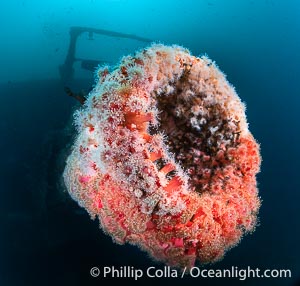
Corynactis californica anemones carpet substructure of the Wreck of the HMCS Yukon in San Diego. The shipwrecks of Wreck Alley are a great place to see vast expanses of rainbow-hued Corynactis anemones. Deliberately sunk in 2000 as part of San Diego's Wreck Alley to form an artifical reef, the HMCS Yukon is a 366-foot-long former Canadian destroyer. It is encrusted with a variety of invertebrate life, including Cornyactis anemones which provide much of the color seen here.
Species: Strawberry anemone, Corynactis californica
Location: San Diego, California
Image ID: 39471
Species: Strawberry anemone, Corynactis californica
Location: San Diego, California
Image ID: 39471
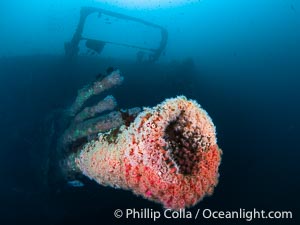
The Wreck of the HMCS Yukon in San Diego. Deliberately sunk in 2000 as part of San Diego's Wreck Alley to form an artifical reef, the HMCS Yukon is a 366-foot-long former Canadian destroyer. It is encrusted with a variety of invertebrate life, including Cornyactis anemones which provide much of the color seen here.
Location: San Diego, California
Image ID: 39472
Location: San Diego, California
Image ID: 39472
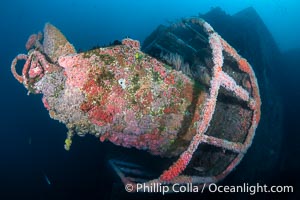
The Wreck of the HMCS Yukon in San Diego. Deliberately sunk in 2000 as part of San Diego's Wreck Alley to form an artifical reef, the HMCS Yukon is a 366-foot-long former Canadian destroyer. It is encrusted with a variety of invertebrate life, including Cornyactis anemones which provide much of the color seen here.
Location: San Diego, California
Image ID: 39473
Location: San Diego, California
Image ID: 39473
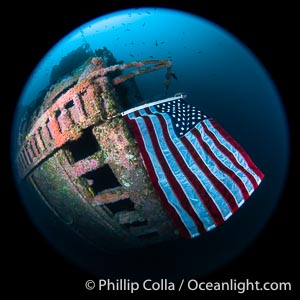
American Flag Flying Over The Wreck of the HMCS Yukon in San Diego. Deliberately sunk in 2000 as part of San Diego's Wreck Alley to form an artifical reef, the HMCS Yukon is a 366-foot-long former Canadian destroyer. It is encrusted with a variety of invertebrate life, including Cornyactis anemones which provide much of the color seen here.
Location: San Diego, California
Image ID: 39477
Location: San Diego, California
Image ID: 39477
